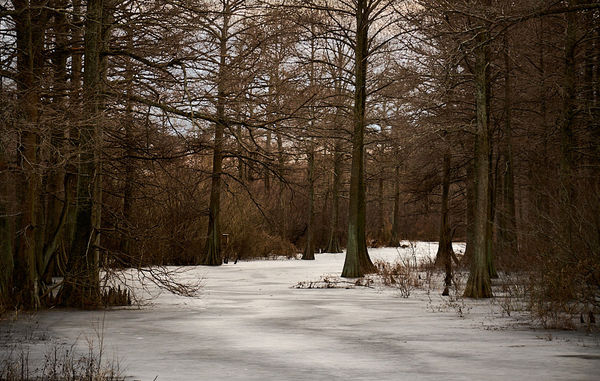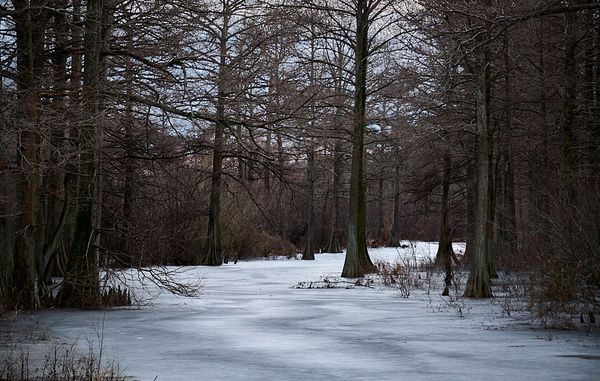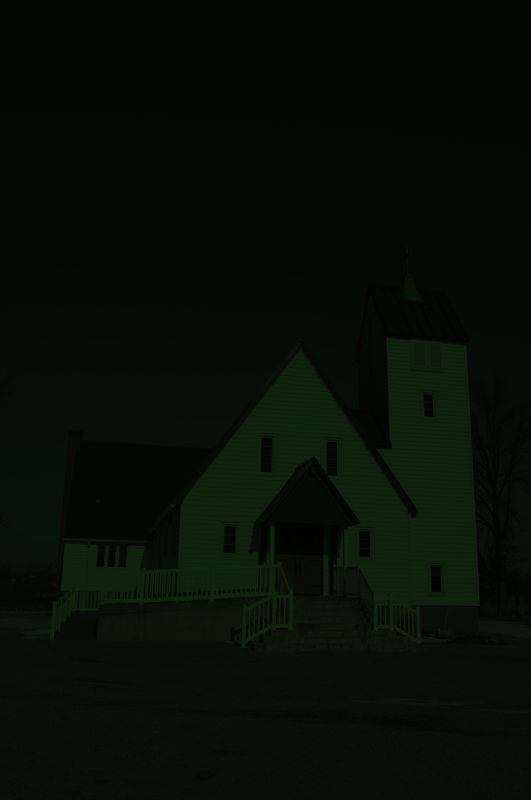Affinity Photo
May 19, 2020 11:30:57 #
Regarding Affinity's destructive RAW edit...
I now do raw edits with DxO Photolab 3 (uses sidecar file)... output a 16 bit TIFF and then do PS type cleanup in Affinity Photo. Hoping AP gets the non-destructive edit ability sometime in the future.
I now do raw edits with DxO Photolab 3 (uses sidecar file)... output a 16 bit TIFF and then do PS type cleanup in Affinity Photo. Hoping AP gets the non-destructive edit ability sometime in the future.
May 19, 2020 11:32:20 #
Ysarex
Loc: St. Louis
Vince68 wrote:
Joe, br br The info that I posted was copied from... (show quote)
No problem. I've corresponded with James at Serif a few times. His job is to tow the company line. Affinity's practice with raw file processing right now is unique in the industry but not in a good way. A lot of people feel as I do that their failure to save your work is ridiculous. James is very aware of that.
My concern here on the forum is that novices and hobbyist users may not be enough aware of the issue and wind up being bit down the road when some hundreds of images later they realize they're screwed. Easy solution is just use a different raw converter that will save your work (they all do).
Joe
May 19, 2020 13:48:07 #
xptom wrote:
Has anyone had experience with using Affinity Photo?
I've used Affinity Photo since it was released on the Windows platform and even presented an introductory course on its usage to our local camera club.
It doesn't have all the bells & whistles of Photoshop but is more than adequate for most 'Photoshop' type postprocessing. It also has some easy to use features for stacking, panorama creation, focus stacking and HDR which I really like since it leaves you in a postprocessing environment immediately after the operations.
It is great postprocessing software for the $$$.
bwa
May 19, 2020 14:12:53 #
Wanderer2
Loc: Colorado Rocky Mountains
I may have missed mention of it in this thread but for the OP, Affinity Photo has a free trial, I'm not sure how long currently but probably two weeks. The best way to find out if it's for you is to try it so the only loss is the time spent if it isn't for you.
Every time there is a thread in UHH on Affinity Photo Joe brings up how terrible the develop persona is, in his opinion. I've used AP for over two years, after bouts with several other programs (LR, PSE, darkroom, FastStone, Silky Pix, and Raw Therapee), and found Affinity Photo the easiest to learn and most intuitive for me. My depth of knowledge and experience with photo editing doesn't begin to compare with Joes's but I simply do not perceive the develop persona problems Joe describes. In the AP workbook Serif makes clear that the main function of the develop persona is to prepare the file for further editing in the other personas. My most commonly used procedure (this is on landscapes only) is to put a file through the develop persona at the beginning, then sometimes a crop, then to the filters section for possible sharpening, haze reduction, and clarity, the to the adjustments section for some of the many of the adjustment functions AP has, then exporting. This is not all I do but is the most typical (I do find the inpainting tool for removing unwanted things from a scene to work well and be very useful). Admittedly there is much more available in AP and perhaps I will encounter the problems Joe describes with the develop module (persona) If/when I proceed to other functions. But, as of now and FWIW, I don't find the problems with the develop persona. After a free trial I was sold on AP and use it almost exclusively now.
Every time there is a thread in UHH on Affinity Photo Joe brings up how terrible the develop persona is, in his opinion. I've used AP for over two years, after bouts with several other programs (LR, PSE, darkroom, FastStone, Silky Pix, and Raw Therapee), and found Affinity Photo the easiest to learn and most intuitive for me. My depth of knowledge and experience with photo editing doesn't begin to compare with Joes's but I simply do not perceive the develop persona problems Joe describes. In the AP workbook Serif makes clear that the main function of the develop persona is to prepare the file for further editing in the other personas. My most commonly used procedure (this is on landscapes only) is to put a file through the develop persona at the beginning, then sometimes a crop, then to the filters section for possible sharpening, haze reduction, and clarity, the to the adjustments section for some of the many of the adjustment functions AP has, then exporting. This is not all I do but is the most typical (I do find the inpainting tool for removing unwanted things from a scene to work well and be very useful). Admittedly there is much more available in AP and perhaps I will encounter the problems Joe describes with the develop module (persona) If/when I proceed to other functions. But, as of now and FWIW, I don't find the problems with the develop persona. After a free trial I was sold on AP and use it almost exclusively now.
May 19, 2020 14:16:55 #
Cwilson341 wrote:
I found Affinity fairly easy to learn and have been extremely pleased with it!





And raw processing (Canon .cr2 and .cr3 files) in my experience works as well as Photoshop.
May 19, 2020 15:14:04 #
I use it in combination with Canon's Digital Photo Processor with great results. You can't beat the price and for every day editing it works very well. If you were a young photographer and paid the Adobe monthly fee by the time you were in your fifties you would have spent $5000.00 for their service. Affinity costs about $50.00 with lifetime updates.
May 19, 2020 15:43:32 #
As someone who uses Photoshop 6 - the last 'stand-alone', I was happy to snap up Affinity @ half-price. I'm still learning it, since all softwares have their own idiosyncrasies. Assuming you have a raw-processor, how can we even compare a program that does pretty much everything you'd expect from Photoshop for the price of a one-month subscription to Photoshop? At some point, the masses that pay $600 a year for the privilege of renting Adobe software will realize they can have basically the same thing for only $25 and you own it. (or $50 if you wait until after the deal expires)
May 19, 2020 16:57:44 #
May 19, 2020 19:42:44 #
I use Affinity Photo and Capture One Pro. One thing Affinity Photo has over Photoshop is that the brushes are live. This is extremely useful for blending images together.
May 19, 2020 20:09:17 #
dandev
Loc: Enumclaw, WA
Dennis833 wrote:
I use Affinity Photo and Capture One Pro. One thing Affinity Photo has over Photoshop is that the brushes are live. This is extremely useful for blending images together.
Affinity and Capture One are a good combo.
May 19, 2020 20:09:32 #
Ysarex
Loc: St. Louis
Wanderer2 wrote:
I may have missed mention of it in this thread but for the OP, Affinity Photo has a free trial, I'm not sure how long currently but probably two weeks. The best way to find out if it's for you is to try it so the only loss is the time spent if it isn't for you.
Every time there is a thread in UHH on Affinity Photo Joe brings up how terrible the develop persona is, in his opinion.
Every time there is a thread in UHH on Affinity Photo Joe brings up how terrible the develop persona is, in his opinion.
Hey, I'm being talked about.
 Which is fine. And you're right I do bring up problems with Affinity's Develop Persona. I'm going to keep doing that because I think it's important to know. Folks who are considering adopting AP deserve to know as much as possible up front. In all fairness I do make an effort to also praise AP as an excellent raster editor and the best bargain available.
Which is fine. And you're right I do bring up problems with Affinity's Develop Persona. I'm going to keep doing that because I think it's important to know. Folks who are considering adopting AP deserve to know as much as possible up front. In all fairness I do make an effort to also praise AP as an excellent raster editor and the best bargain available.And it is that. AP is at heart a raster image editor. Serif has done a fine job with AP as a raster editor; AP is done right and it works well.
Wanderer2 wrote:
I've used AP for over two years, after bouts with ... (show quote)
So let's talk more about my concerns so everyone understands the issues. Some remarks on my perspective:
Obviously what's important to me doesn't have to be important to everyone else. This is what I do. It's pretty much all I do and it's what I've done for the past 40 years. Since 1975 photography in one form or another has been my only source of income. Most of the folks here are of course enthusiasts and don't have my priorities.
I shoot and process raw files. So my focus is on a raw processing workflow. I want a photo to look the way I intend and need tools to make that possible; apart from that I place a very high value on my workflow being 100% non-destructive and non-linearly re-editable. If I can achieve that I consider it a win. In order to achieve that goal one practice I employ is to avoid using raster editors. Processing raw files with a raster editor doing the heavy lifting usually forces a destructive workflow. AP always forces a destructive workflow because of the Develop module.
That sounds bad but it may not be too bad depending on your priorities. Destructive editing has two distinct meanings. 1. Protecting the original. We never want to develop a practice where we could overwrite our original photo. Catastrophe! If we're working with raw files we're protected since we can't overwrite our original raw data but we could delete the file. 2. Destructive editing also refers to our processing work. An edit is partially destructive if our processing apps force us to re-do some or all of our editing work in order to make a change. Obviously that can be a higher priority for some of us than others. It's very high for me and I do go back to my edited images and often enough decide I want to change something. I get pretty unhappy if I decide I want to make a further adjustment to an image and discover I have to re-do most or all of the original edit. I get downright ugly if I decide I want to make that adjustment to a collection of 400 images and discover the same problem.
In what way is AP a forced destructive process for a raw workflow? Start with a raw file and it opens in the Develop Persona. Perform edits: set the white balance, make tone/color changes, crop, sharpen the image and when you're ready click Develop. All your edits are applied and the raw file is converted to and RGB image and opened in the Photo Persona. But any work you did in the Develop persona got discarded. AP doesn't save your Develop Persona editing, all other raw converters do.
So you continue to edit your RGB image in the raster (Photo Persona) component of AP. As you work with the color in the image you realize that you'd like to go back and tweak the white balance. AP then forces you to start your edit over from scratch. Your work in the Develop Persona was not saved as it would have been by any other raw converter and you get to start from scratch. That sucks. I'd at least like to be able to re-open the raw file and have my edit pick back up from where I left the raw file. It would using any other raw converter.
Now we also see here the reason for my earlier comment; "Processing raw files with a raster editor doing the heavy lifting usually forces a destructive workflow." Using an editor like AP means adopting a dual app workflow. Editing becomes: raw conversion a) app one and then RGB raster editing b) app two. That's the AP model: a) app one the Develop Persona and b) app two the Photo Persona. That's also the legacy model. It's what we all did for the past 15 years. The problem with that model is the move from app one to app two. Typically you can't go back to the work done in app one, make an adjustment and expect that adjustment to update through the work in app two -- destructive workflow.
A whole lot of people are happy with that model and don't place the level of priority that I do on a seamless raw workflow where I retain full access to my entire edit start to finish. But movement in the industry is in my direction. It started with LR and what we're seeing now is more and more of the raw conversion software expanding their toolsets so that we can cut out the raster editor for most if not nearly all of our editing.
Back to AP and the Develop Persona. AP is designed for us to use the raster editor -- the dual app model if we start with a raw file. AP's toolset in the Develop Persona is sparse. There's no question we're headed for the Photo Persona to finish the edit and so all of our editing is partially destructive. If you get the idea in your head that you'd like to change something you did in Develop then you just start over. What this does to most AP users is encourage them to do as little as possible in Develop and get right to work ASAP in the Photo Persona. AP is pushing in the opposite direction than the rest of our industry in that sense.
The dual app model has another liability which is large file sizes and an insatiable need to big disk space. If I succeed in my goal and keep my editing 100% non-destructive in my raw converter I use only 20% of the disk space needed to complete the edit in AP. Multiply that times tens of thousands of photos.
To wrap up; AP is an excellent raster editor and a great bargain. I'm familiar with it because I teach this stuff but if I can do it with my own work I prefer to use 20% less disk space than an AP user requires and I prefer to keep my raw workflow 100% non-destructive and non-linearly re-editable. To do that I need a single app solution that doesn't rely on raster editing.
If I wanted or needed to use AP I'd at least supplement it with a raw converter that saves my work. That's just bogus that AP won't save your Develop editing. It doesn't have to be expensive -- DarkTable is free and most cameras are supplied with a raw converter from the camera manufacturer.
Joe
May 19, 2020 20:20:32 #
Ysarex wrote:
So let's talk more about my concerns so everyone u... (show quote)
Insightful analysis. As an AP user I really appreciate the information you presented. Nicely done.
May 19, 2020 21:25:13 #
Ysarex
Loc: St. Louis
TucsonDave wrote:
Insightful analysis. As an AP user I really appreciate the information you presented. Nicely done.
Thanks, and I wasn't finished so I'll pick up here.
I want to present a visual of some of what I was talking about being able to do. Below are two versions of the same photo. Their processed in a parametric raw editor instead of a raster editor. AP is a raster editor. Parametric editors operate differently and save your editing work not as the image and all it's millions of pixels but as an instruction set (literally a text file usually) or recipe of what to do. This is why there's such a big disk usage difference -- the instruction set saves as a few kilobytes.
Now I want to stress this and maybe it should be bold. Using AP's raster editing tools does not produce an inferior quality result. AP can render either one of those images below and do just as good an IQ job. This is about raw workflow.
I really like the warm version of that photo that you see first. I set a warm white balance. That's very familiar landscape for me and the warm version just makes me feel at home. I really like the cool version of that photo you see second. I set a cool white balance. The cool version says winter to me. Note just left of center in the warm version the bird house on the tree. I really like the human touch the bird house adds to the photo. I also really like the untouched by human hands feeling of the photo without the bird house. Obviously I have to have both versions. This happens to me with some frequency. And the answer is keep them both.
Now what I have stored is the one raw file and two instruction sets. To create the 2nd version of the photo I simply copied the instruction set with all the editing and just changed the white balance. You couldn't do that using AP. The white balance is applied to the raw data and AP doesn't save your raw editing work and even if it did you'd still have the dual app problem and the white balance change wouldn't update the 2nd app edit.
The bird house clone-out is a layer in the edit and there's a check box next to it. I can just turn it on and off as I please. My access to it is surgical. Now you could do that with a layer in AP except that cloning/healing layer would have to be a raster layer and so it's going to be one color or the other but not both. In my edit it's both. The bird house cloning layer updates with the white balance change. That's an exclusive feature of parametric editing. Now it's important to note that cloning/healing work is also a big problem for parametric editors. Most struggle with it quite severely while raster editors excel. There's no one perfect answer. I do occasionally use AP because I need it.
So the point of this example is a raw workflow in which I retain full access to the raw data and all of my editing done parametrically. This is a single app solution as opposed to the AP model which is a dual app solution. My result is a 100% non-destructive and non-linearly re-editable raw workflow. I have an efficiency advantage using the single app and a big disk storage advantage working parametrically. You can do equal quality work using AP but your work will be less efficient. To do what I did here you will have to re-do some of your work and you'll have a couple huge afphoto files to store and keep track of plus the raw original.
For a hobbyist this workflow difference can be no big deal. AP is a great raster editor at a fantastic price and you're all set. For someone with tens of thousands of raw files this difference can be huge. AP doesn't save my editing work for my raw files?!! That's got me cussing and spitting on the ground.
Joe
May 20, 2020 00:02:49 #
I have a question that I've never really looked int. Regarding RAW editing, Iknow how a RAW file is made up of so many colors that it is not viewable and must be converted to jpeg(or some other rpg) and then saved. But what are you changing when you edit RAW? I have ON1 and Affinity and Corel PaintShop Pro and I also have Corel Aftershot Pro, and either it is not very good, or I don't know what I'm looking for(I don't know what changes I should be aware of) but i don't see ho it is much different from the raster editors. Can anyone explain what is the goal/target of RAW edits?
May 20, 2020 00:31:58 #
Ysarex
Loc: St. Louis
dieseldave wrote:
I have a question that I've never really looked int. Regarding RAW editing, Iknow how a RAW file is made up of so many colors that it is not viewable and must be converted to jpeg(or some other rpg) and then saved.
A raw file is in fact viewable. It just doesn't look like much. It's going to be real dark and seem very flat. So it's just a novelty but the image below is an unprocessed and undemosaiced raw file. If you download it and zoom in real close you'll see the Bayer filter array in place.
dieseldave wrote:
But what are you changing when you edit RAW? I have ON1 and Affinity and Corel PaintShop Pro and I also have Corel Aftershot Pro, and either it is not very good, or I don't know what I'm looking for(I don't know what changes I should be aware of) but i don't see ho it is much different from the raster editors. Can anyone explain what is the goal/target of RAW edits?
The goal is the same -- a good photo. The raw file has all the data the camera sensor was able to capture. Good raw processing software makes that data available to you.
It's getting late here but I'll check back in the morning and I may be able to help.
Joe
If you want to reply, then register here. Registration is free and your account is created instantly, so you can post right away.






